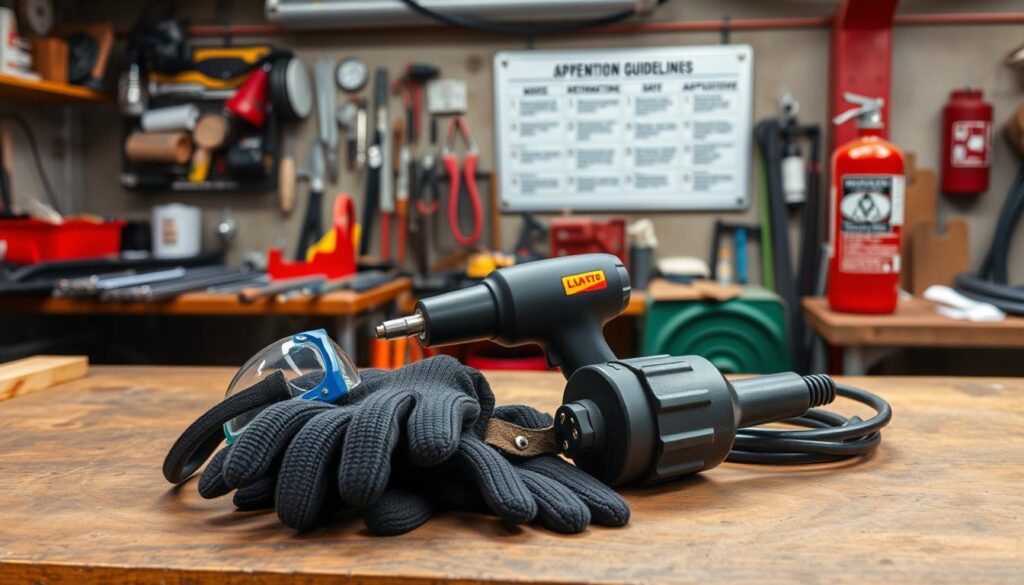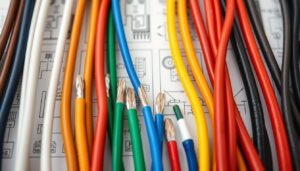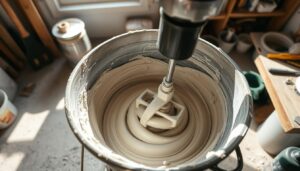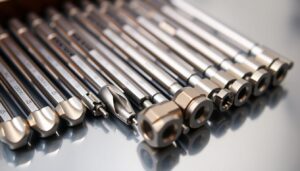Are you aware of the potential dangers associated with using a heat gun? When not handled properly, these powerful tools can cause severe burns, start fires, and damage materials. As you embark on DIY projects or professional tasks, understanding the essential safety precautions is crucial.
You might be surprised to know that heat guns can reach temperatures of up to 1000 degrees Fahrenheit, making them significantly more powerful than household items like hair dryers. To prevent accidents and ensure the quality of your work, it’s vital to follow safety guidelines.
This article will guide you through the necessary safety measures, from selecting the right tool to emergency preparedness, helping both beginners and experienced users achieve successful project outcomes.
Key Takeaways
- Understand the potential dangers of using a heat gun incorrectly.
- Learn how to select the right heat gun for your project.
- Discover essential safety precautions to prevent accidents.
- Find out how to prepare for emergencies when working with heat guns.
- Improve the quality and effectiveness of your work by following safety guidelines.
Understanding Heat Guns and Their Potential Hazards
Familiarity with the mechanics and hazards of heat guns is essential for their safe and effective use. You need to understand how a heat gun operates to appreciate its potential risks.
What is a Heat Gun and How Does It Work?
A heat gun is a device that generates hot air through an electrically heated element and a fan system. It is used for various tasks, including stripping paint, loosening rusted bolts, thawing pipes, and bending plastic.
Common Risks Associated with Heat Gun Use
Using a heat gun can pose several risks, including burns from direct contact with the nozzle or heated surfaces. Heat guns can also ignite flammable materials and produce toxic fumes when used on certain substances. Moreover, there is a risk of electrical hazards, particularly with damaged cords or improper use.
| Hazard | Description | Precaution |
|---|---|---|
| Burns | Direct contact with the nozzle or heated surfaces | Use heat-resistant gloves |
| Fire Risk | Igniting flammable materials | Keep flammable materials away |
| Toxic Fumes | Using heat guns on certain substances | Ensure proper ventilation |
Selecting the Right Heat Gun for Your Project
Understanding the different types of heat guns and their applications is key to choosing the right tool for your project. When working on various tasks, from removing stickers to stripping paint, the right heat gun can make all the difference.
Different Types of Heat Guns and Their Applications
Heat guns come in various models, ranging from basic DIY tools to industrial-grade professional equipment. For lighter tasks, a basic heat gun with adjustable temperature settings is usually sufficient. However, for more demanding jobs, an industrial heat gun with higher heat output is necessary.
Importance of Adjustable Temperature Settings
Adjustable temperature settings are crucial when working with different materials. Always check the temperature settings before starting a project, and adjust them according to the material you’re working with. This ensures safe and effective use of the heat gun.
Essential Protective Gear for Safe Use of a Heat Gun
Safety should always be your top priority when using a heat gun, starting with the right protective gear. To minimise risks, it’s essential to wear appropriate safety equipment.
Heat-Resistant Gloves and Eye Protection
Start with a good pair of heat-resistant gloves to shield your hands from accidental contact with the hot nozzle or heated surfaces. Eye protection is equally necessary, as small particles can become airborne during tasks like paint stripping.
Appropriate Clothing and Respiratory Protection
Consider wearing long sleeves and non-flammable clothing to minimise the risk of burns from hot air or flying debris. Additionally, when working with materials that may release toxic fumes when heated, ensure you have proper respiratory protection.
By wearing the right protective gear, you can significantly reduce the risk of injuries when using a heat gun.
Creating a Safe Working Environment
The safe use of a heat gun begins with setting up a well-ventilated and hazard-free work area. When using heat, it’s vital to consider the environment around you to prevent accidents and ensure a smooth operation.
Ensuring Proper Ventilation
To avoid inhaling toxic fumes, make sure you are working in a well-ventilated area. If you’re indoors, open windows and doors to allow fresh air to circulate. Alternatively, you can use fans to help disperse fumes, ensuring a safer working environment.
Clearing the Area of Flammable Materials
Clear the area around your workspace of any flammable or combustible materials. This precaution helps prevent fires and ensures that you have a safe and unobstructed work surface.
| Safety Precaution | Benefit |
|---|---|
| Proper Ventilation | Reduces inhalation of toxic fumes |
| Clearing Flammable Materials | Prevents fires and accidents |
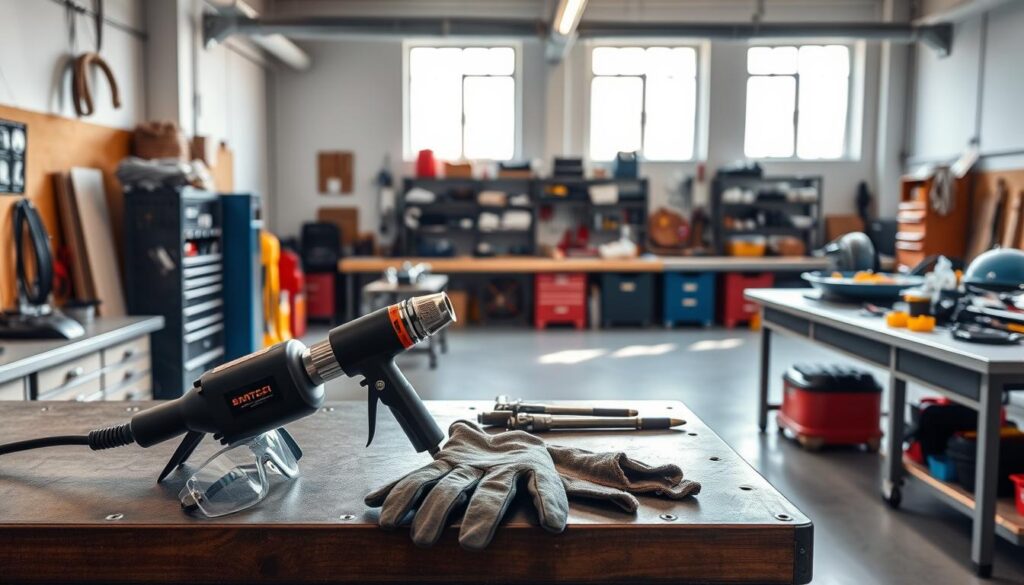
Proper Handling Techniques
When using a heat gun, it’s crucial to adopt proper handling techniques to ensure safety and effectiveness. You need to be mindful of how you hold and position the heat gun to maintain control and prevent accidents.
Maintaining Safe Distance from Surfaces
Keep the heat gun at a safe distance from the surface you’re working on to avoid damage and prevent overheating. Never touch the gun directly to the object being heated, as this can cause material damage or start a fire.
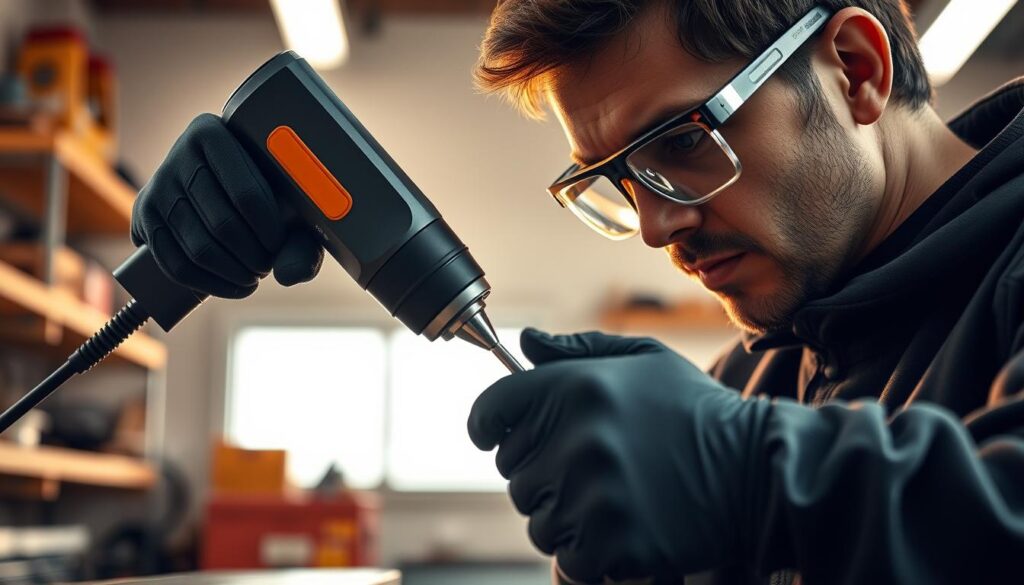
Correct Grip and Positioning
Hold the heat gun firmly but not too tightly, allowing you to control the direction of the airflow. Ensure you’re directing the airflow away from your body and other sensitive or flammable objects. Move the tool in a controlled manner to apply heat evenly and avoid overheating specific areas.
Temperature Management and Material Considerations
Effective temperature management is crucial when using a heat gun to avoid damaging materials and ensure optimal results. Different materials respond uniquely to heat, necessitating a thorough understanding of their temperature requirements.
Understanding Temperature Requirements for Different Materials
Various materials have distinct temperature thresholds. For instance, certain plastics may deform or melt at relatively low temperatures, while metals typically require higher temperatures to achieve the desired effect. A comprehensive guide to temperature requirements for different materials, including plastics, wood, metal, and paint, is essential for safe and effective heat gun operation.
| Material | Temperature Range (°C) | Notes |
|---|---|---|
| Plastics | 100-200 | Risk of deformation or melting |
| Wood | 150-250 | Risk of charring or burning |
| Metal | 300-500 | Higher temperatures often required |
| Paint | 100-300 | Care needed to avoid stripping paint too aggressively |
Avoiding Overheating and Material Damage
Overheating can lead to damage, including warping, burning, or the release of toxic fumes. To avoid this, it’s crucial to evenly spread the heated airflow over the object and maintain a safe distance. For more information on safe practices, refer to guidelines such as those found on the Princeton University EHS Heat Gun Advisory page.
By understanding the appropriate temperature settings and techniques for gradual heating and cooling, you can prevent thermal shock and damage. Testing temperature settings on inconspicuous areas before working on visible surfaces is also a prudent practice.
Fire Safety and Emergency Preparedness
Fire safety is a top priority when using heat guns, given their potential to cause fire if not handled properly. When operating a heat gun, you must be aware of the surroundings to prevent any extremely high temperatures from igniting nearby materials.
Having Fire Extinguishers Readily Available
It’s crucial to have a fire extinguisher readily accessible, especially when working in enclosed spaces or with flammable materials. Ensure that you know how to use it properly and that it’s suitable for the types of fires that could occur in your workspace.
Keep the area clear of combustible materials and ensure that your workspace is well-ventilated to prevent the accumulation of fumes that could ignite.
Proper Cooling and Storage After Use
After using a heat gun, allow it to cool down properly before storing it. This prevents accidental burns and reduces the risk of fire due to flammable materials coming into contact with the still-hot device.
Store the heat gun in a dry, secure location, away from any combustible or flammable materials, and ensure it’s out of reach of children.
Conclusion: Prioritising Safety for Effective Heat Gun Use
The safe operation of heat guns is paramount, and by following the recommended precautions, you can minimise risks and maximise results. To use a heat gun effectively, it’s crucial to understand the potential hazards and take necessary safety considerations into account. By doing so, you not only prevent accidents but also ensure more efficient project outcomes.
To make sure you’re using your heat gun safely, develop safe habits by following the guidelines outlined in this article. Regular practice and familiarisation with heat gun operation will also help you tackle complex projects with confidence. Always consult the manufacturer’s guidelines for specific models and applications to ensure proper use.
By prioritising safety and adhering to these tips using heat guns effectively, you can harness their full potential for your projects. Implement these safety measures in your next heat gun project to achieve successful outcomes.
